How to unblock a dishwasher
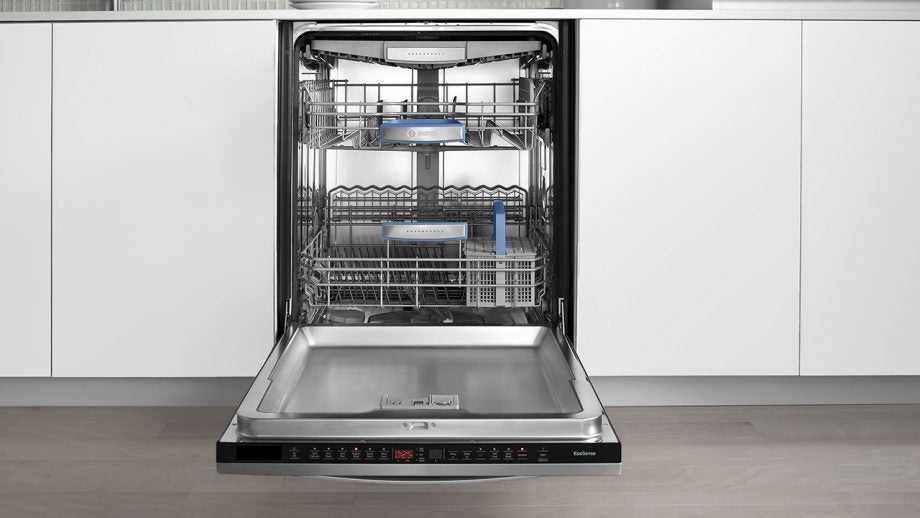
Dishwasher not draining or washing as well as it should? It’s likely the cause is a blockage. The good news is that it’s often easy to fix – and something you can resolve yourself. Follow these steps on unblocking a dishwasher and not only will you be back to sparkling crockery in no time at all, you could save big on having to call out a plumber.
If you can’t fix the problem and your dishwasher is beyond saving, then why not check out our guide to the best dishwashers and get yourself a brand-new model?
1. Finding the source of the blockage
Dishwasher blockages tend to be the result of either solid lumps of food debris, bones or foreign objects – for example, pieces of plastic that have come loose from items you’ve washed, or shards of broken glass or crockery. A telltale sign of a blockage is when there’s standing water in the machine instead of it draining away.
2. Clearing a filter blockage
Turn off the power to your machine at the mains, then remove the baskets. The cylindrical mesh filter will be at the base of the machine, usually below the spray arm. 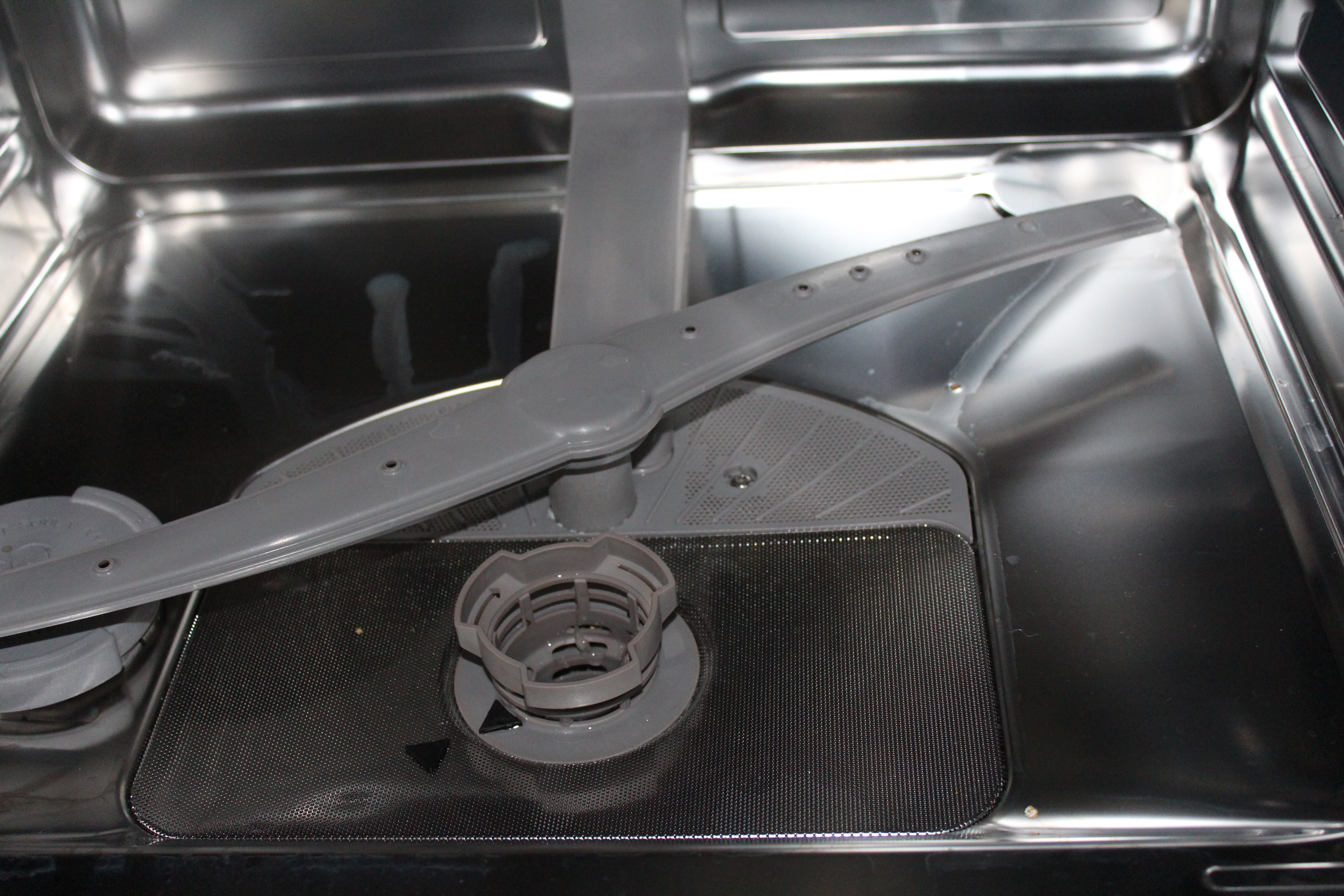 Remove the cover and carefully take out the filter, taking care not to injure yourself on any pieces of broken glass or sharp edges.
Remove the cover and carefully take out the filter, taking care not to injure yourself on any pieces of broken glass or sharp edges. 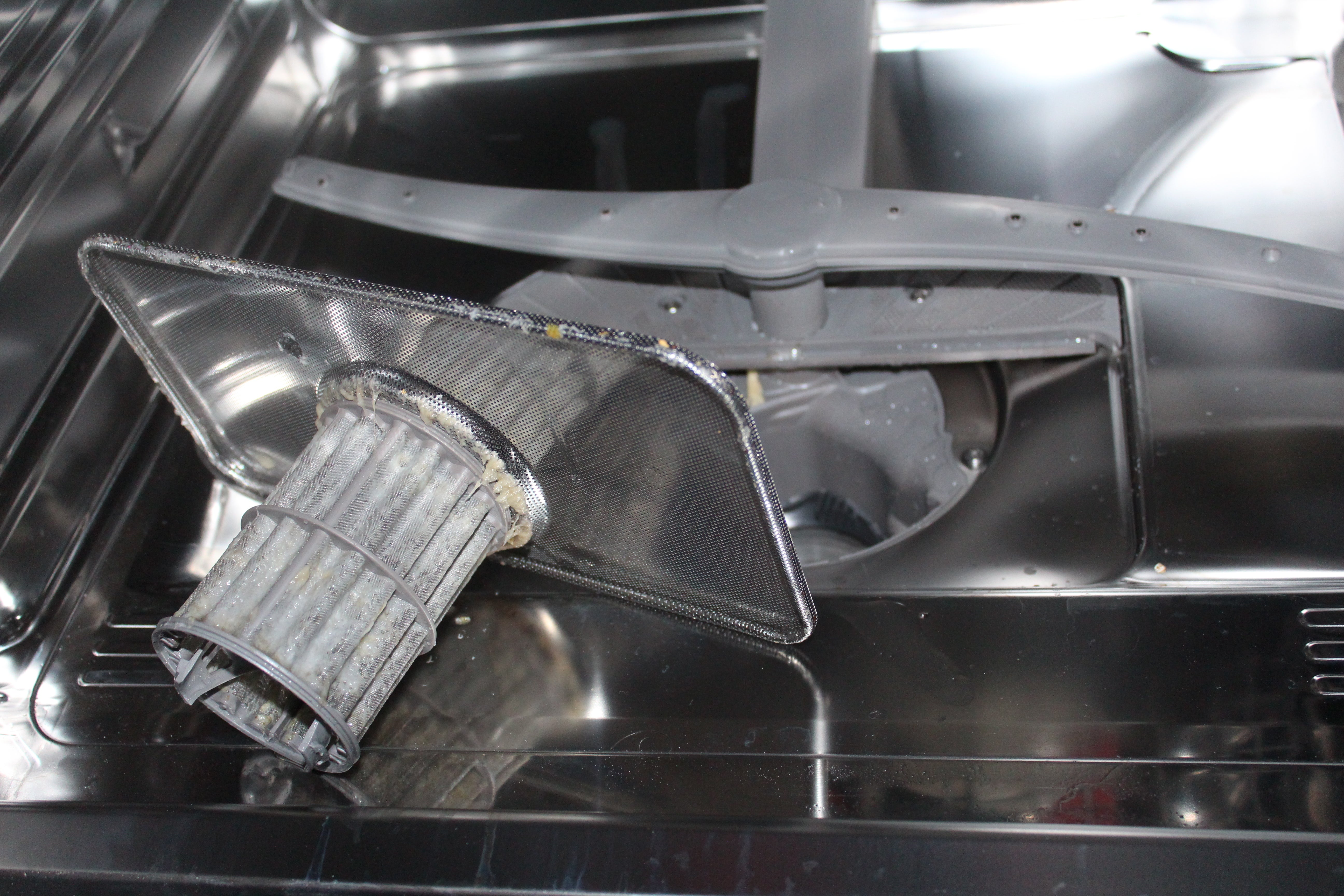 You may want to wear gloves if there’s food debris caking the filter. Scrub it under hot running water with some detergent and a sponge to clean away any build-up of grease.
You may want to wear gloves if there’s food debris caking the filter. Scrub it under hot running water with some detergent and a sponge to clean away any build-up of grease.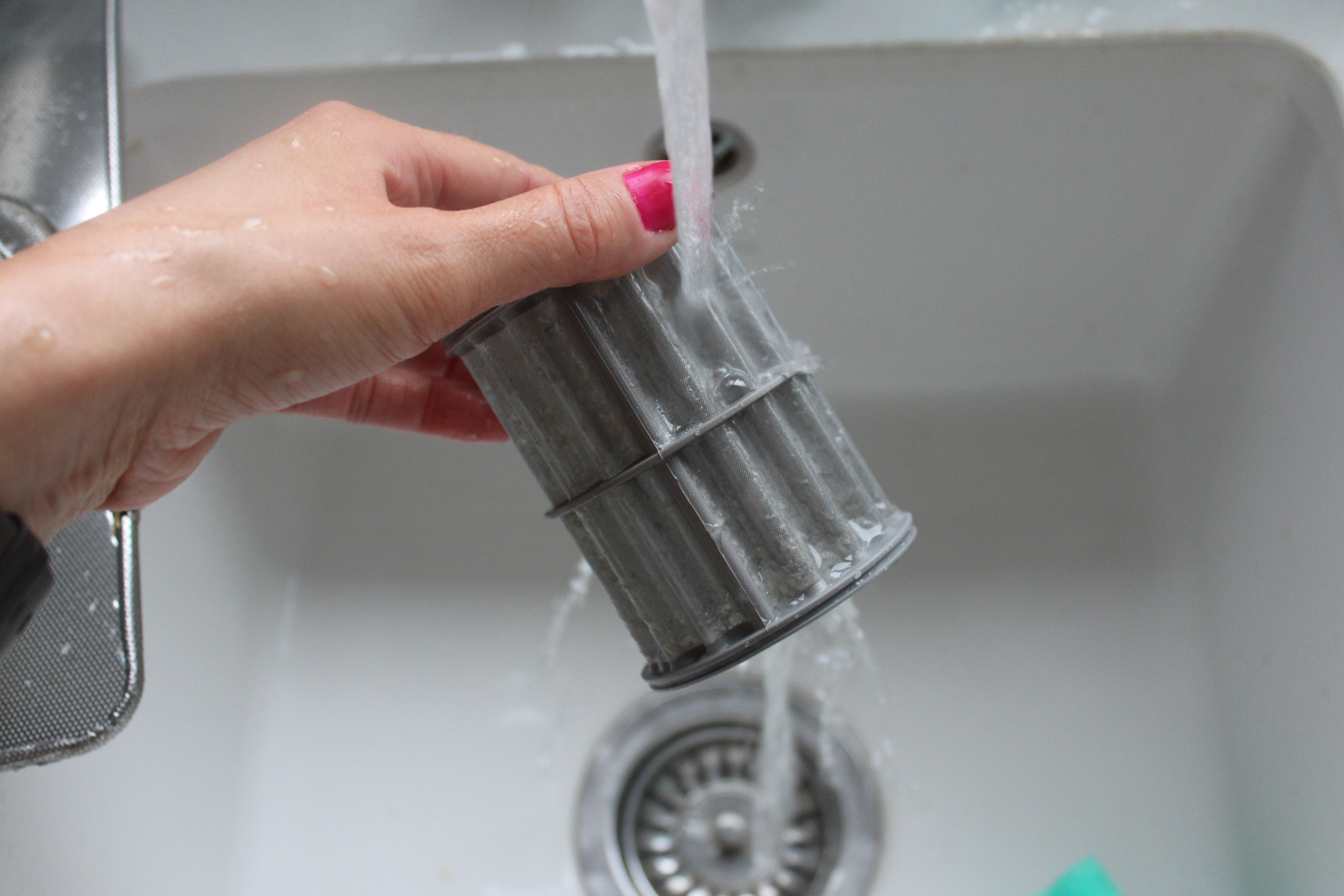
If water remains in the dishwasher, scoop some of it out so you can check for any other blockages in the sump (the hole that leads to the drain). There may be a lot of standing water, so put some old towels on the floor since this can be a messy job – they’re handy for wiping away spills once you’ve finished, too.
The dishwasher’s manual should show which parts of the sump are accessible and where you can check for other potential obstructions.
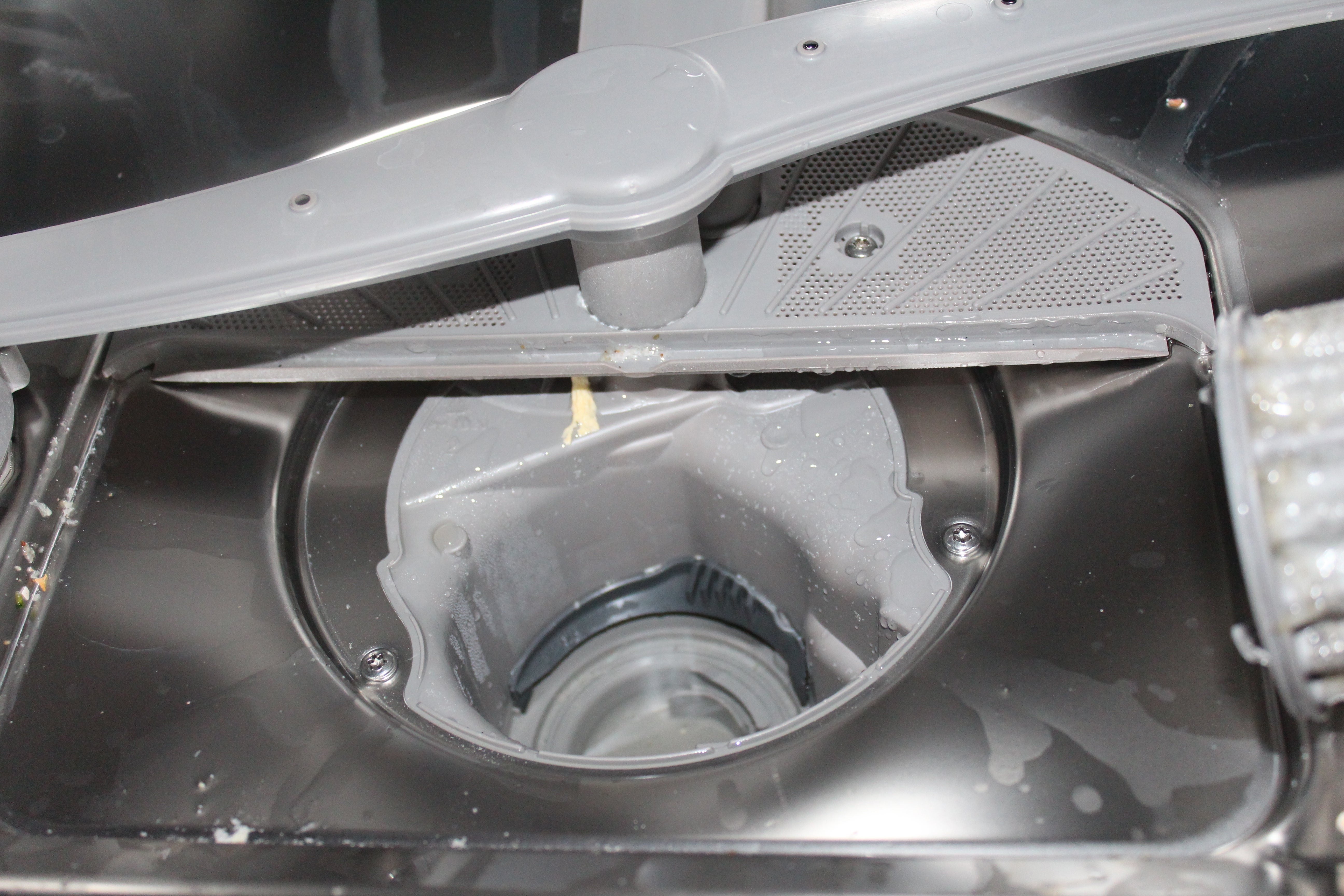 When replacing the filter and the cover, check that they’re properly aligned and that the spray arm is rotating freely. Run a short cycle to check that the water is now draining away.
When replacing the filter and the cover, check that they’re properly aligned and that the spray arm is rotating freely. Run a short cycle to check that the water is now draining away.
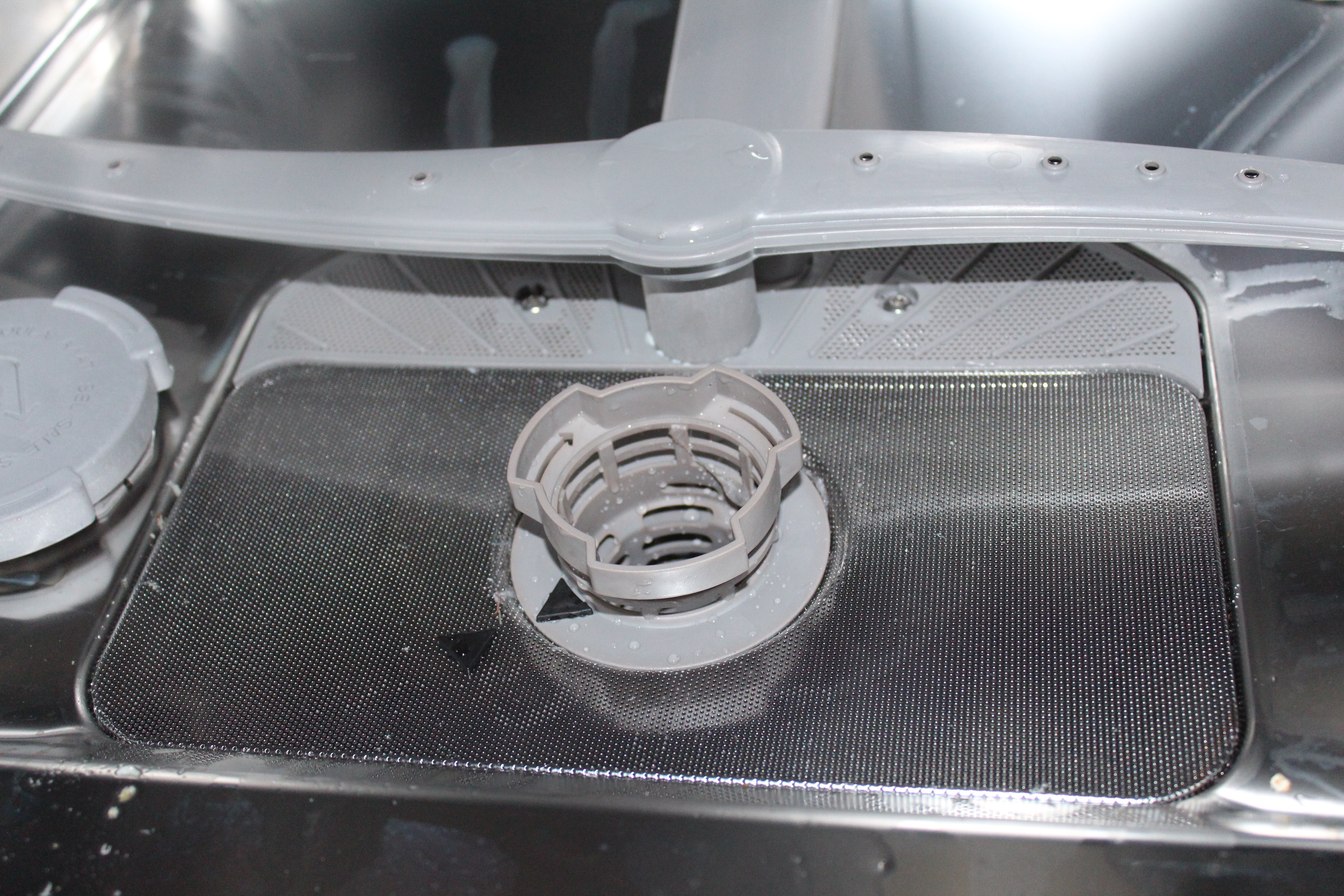
3. Other clogs
Cleaning out the filter should solve most problems. However, if standing water remains, it could indicate that the blockage is elsewhere. For example, if your dishwasher waste connects to your sink and the water there is draining slowly, this could be the site of the blockage. Try flushing your sink waste with boiling water or use a plunger to clear a clog.
A blockage could also be further down the dishwasher waste hose. If the dishwasher is freestanding, isolate the water supply to the machine, then ease the dishwasher away from the wall (you may have to lower it using the feet if it’s a snug fit). Check that hose doesn’t have any obvious blocked points or kinks.
Correct any bends, and if you find a clog, disconnect the hose, keeping the open end raised. Use a long flexible brush, or squeeze the hose gently, to dislodge it. Reconnect the hose securely and when you push your machine back into place, ensure there’s enough room for the hose not to be compressed, allowing it to drain water away freely. Run a short cycle to check for leaks.
The hose for an integrated dishwasher will be difficult to access. In this instance, or if clearing the hose on a freestanding machine hasn’t resolved the problem, you’ll need to call in an engineer.

